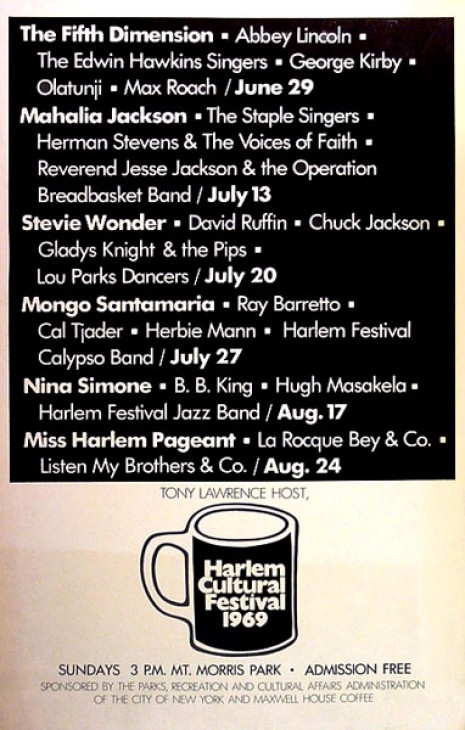
While hippies enjoyed “three days of peace and love” in Woodstock, another equally important music festival was staged in Harlem. What’s become known as Black Woodstock was a series of concerts, held at 3pm on Sundays, at Mount Morris Park, between 29 June and the 24 August, 1969. The Festival was headlined by B.B. King, The Staples Singers, Nina Simone, Gladys Knight, Stevie Wonder, Sly & the Family Stone and attended by over 100,000 concert-goers.
The concerts came soon after the Watts Riots, and the assassinations of Malcolm X and Martin Luther King. At the time, the local NAACP chairman likened Harlem at the time to the vigilante Old West. The NYPD refused to provide security for the Festival, which was provided instead by the Black Panthers, some of whom had been indicted of a bombing campaign across Manhattan.
Black Woodstock was a mix of religious gathering, rock concert and civil rights rally, as the black community was encouraged to take power into its own hands, most notably when Reverend Roebuck Staples, of the Staple Singers, injected a sermon into his performance:
“You’d go for a job and you wouldn’t get it. And you know the reason why. But now you’ve got an education. We can demand what we want. Isn’t that right? So go to school, children, and learn all you can. And who knows? There’s been a change and you may be President of the United States one day.”
The Harlem Festival was filmed by television producer, Hal Tulchin, who hoped to sell the footage to the networks. None of the networks were interested, which says much about the politics of the time, and the fifty hours of filmed material has since been kept under lock and key. The odd snippet has been sneaked on to You Tube, and Nina Simone licensed film of her performance for a DVD release, but why the whole concert has never been released or even shown on TV is a damning indictment on America’s media. As Alan McGee asked last year
Why is Black Woodstock still sitting in the vaults? For me, this is not just a concert, but a valid historical document capturing the height of the black power movement, positivism and the tension within their community. I remember a poignant Simone quote from 1997 when asked why she left the US: “I left because I didn’t feel that black people were going to get their due, and I still don’t.” It’s hard to disagree with her when a cultural event as significant as Black Woodstock has been gathering dust in a vault for over forty years.





